Table of Contents
THC Concentrates: A Guide to Enhancing Your Cannabis Experience
THC concentrates have skyrocketed within the world of recreational and medicinal cannabis users. Among the various forms of concentrates, those rich in tetrahydrocannabinol (THC) have garnered significant attention. THC concentrates offer potent and concentrated doses of the psychoactive compound found in cannabis, providing users with a highly efficient way to experience its effects. In this article, we will explore the different types of THC concentrates and delve into how they are made.
Types of THC Concentrates
- Shatter: Shatter is a translucent, brittle concentrate that is known for its glass-like appearance. It is produced by subjecting cannabis plant material to a solvent extraction process, typically using butane or propane. The resulting extract is then purged of any residual solvents, leaving behind a potent and pure THC concentrate. Shatter is usually consumed by vaporizing it or by using a dab rig, offering users an intense and immediate high.
- Wax: Wax, also referred to as budder or crumble, is a softer and more malleable concentrate compared to shatter. It gets its texture from the whipping process during production, which creates a wax-like consistency. Like shatter, wax is made using a solvent extraction method, but with slight variations in temperature and agitation. Wax is popular among users who enjoy dabbing or vaporizing, as it provides a potent and flavorful experience.
- Live Resin: Live resin is a concentrate that has gained popularity for its exceptional flavor and aromatic profile. It is made by freezing freshly harvested cannabis flower and extracting the cannabinoids and terpenes while still maintaining the plant’s natural moisture and aroma. The freezing process preserves the delicate compounds that can be lost during traditional extraction methods. Live resin is highly regarded for its rich and vibrant terpene content, offering an exquisite and potent THC experience.
- Rosin: Rosin is a solvent-less concentrate that has gained popularity due to its purity and simplicity of production. It is made by applying heat and pressure to cannabis flower or hash, causing the resinous trichomes to separate from the plant material. The resulting extract is a sticky and translucent substance that contains high levels of THC. Rosin can be consumed through dabbing, vaporizing, or added to cannabis flower for an enhanced experience.
- Hashish: Hashish, also known as hash, is one of the oldest and most traditional forms of cannabis concentrates. It is made by compressing and heating the resinous trichomes of the cannabis plant, which creates a dense and potent product. Hashish can vary in texture, from soft and malleable to hard and brittle, depending on the production method. It can be consumed by vaporizing, smoking, or adding it to cannabis flower.
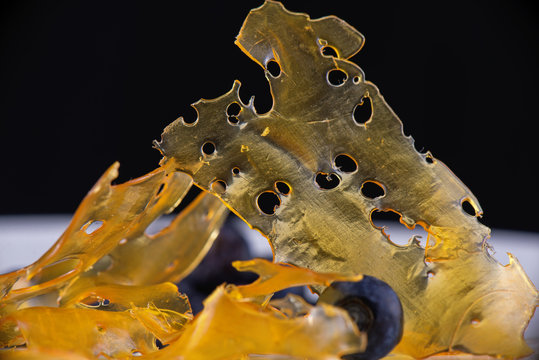
Among the various types of THC concentrates, shatter stands out for its distinct appearance and potent effects. Known for its glass-like transparency and high THC content, shatter has gained popularity among both recreational and medicinal cannabis users. Let’s dive deeper into the world of shatter and explore its characteristics, production process, and consumption methods.
Shatter Characteristics
Shatter gets its name from its brittle and glass-like texture, which shatters easily when handled. It is typically amber or golden in color, with a translucent appearance that allows light to pass through. Shatter’s high THC potency, often exceeding 80%, delivers a powerful and fast-acting psychoactive experience.
Shatter Production Process
The production of shatter involves a process called solvent extraction. Typically, butane or propane is used as the solvent to extract cannabinoids, terpenes, and other desirable compounds from cannabis plant material. Here’s an overview of the production process:
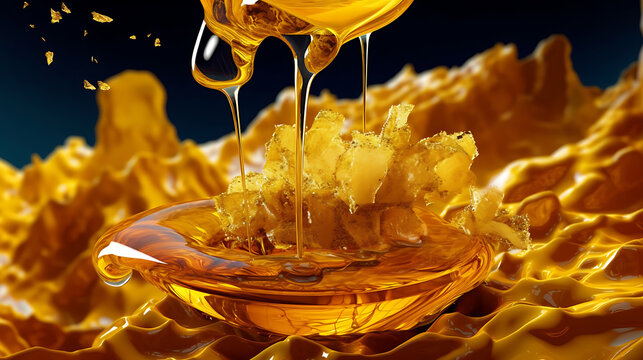
Extraction
The cannabis plant (sativia, indica, or hybrid) material is packed into a container or extraction tube. The chosen solvent, either butane or propane, is then passed over the plant material to dissolve the trichomes and resinous glands, which contain the desired compounds.
Purging
After the extraction process, the solvent is removed through a process known as purging. This step involves subjecting the extracted solution to low heat and vacuum conditions, allowing the solvent to evaporate gradually. Purging ensures that no residual solvents remain in the final product, making it safe for consumption.
Cooling and Shaping
Once the solvent has been purged, the remaining concentrate is left to cool and solidify. During this phase, the concentrate takes on its characteristic glass-like texture. The cooled concentrate is then shaped into thin sheets or broken into smaller fragments, resembling shattered glass, hence the name “shatter.”
Shatter Consumption
Shatter is commonly consumed through vaporization or dabbing. Vaporization involves heating the concentrate using a vaporizer, which converts it into an inhalable vapor without combustion. This method allows for precise temperature control, resulting in a smooth and flavorful experience.
Dabbing on the other hand, involves using a specialized device called a dab rig. A small amount of shatter is placed onto a heated nail or banger, which instantly vaporizes the concentrate upon contact, producing a potent and immediate effect. Dabbing provides an intense experience due to the high concentration of THC in shatter.
It’s important to note that dabbing can be an advanced consumption method and requires specific equipment and caution. Proper dosing and responsible consumption practices are essential to ensure a safe and enjoyable experience.
Shatter, with its glass-like appearance and high THC content, offers cannabis enthusiasts a potent and concentrated experience. Its production through solvent extraction and subsequent purging results in a translucent and brittle concentrate that can be consumed through vaporization or dabbing. However, it’s crucial to approach shatter and other high-potency concentrates with caution, starting with small doses and gradually increasing as needed. By understanding the unique qualities and consumption methods associated with shatter, users can explore the fascinating world of cannabis concentrates and enjoy the potent effects they offer.
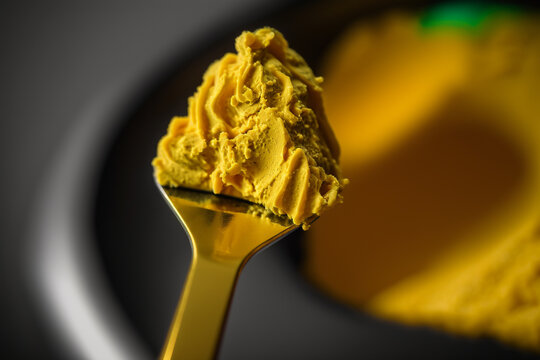
Wax, butter, and crumble
These are all types of cannabis concentrates that fall under the umbrella term of “dabbing extracts.” These extracts are known for their high THC content and versatility in terms of consistency and texture. Let’s delve deeper into the world of wax, butter, and crumble concentrates and uncover their characteristics and production methods.
Wax: As the name suggests, wax has a soft, pliable, and wax-like consistency. It ranges in texture from a crumbly, grainy substance to a more malleable, clay-like material. The consistency of wax can be influenced by factors such as the extraction method, temperature, and post-processing techniques. Due to its malleability, wax is easy to handle and manipulate, making it a popular choice among dabbing enthusiasts.
Butter: Butter, also known as budder, has a creamy and buttery consistency. It is typically whipped during the extraction process, which introduces air into the concentrate, resulting in its light and fluffy texture. Budder is more moisture-rich than wax, making it easier to handle and work with. Its consistency allows for easy spreading and dabbing, providing a smooth and flavorful experience.
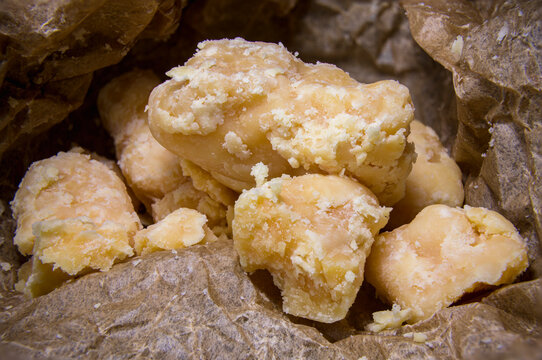
Crumble: Crumble is characterized by its crumbly, dry, and brittle texture. It often resembles small chunks or granules that easily break apart when handled. Crumble concentrates tend to be less sticky than wax or butter, making them convenient to work with. The dry texture of crumble makes it easy to measure and portion for consumption.
Wax, Butter, and Crumble Production Methods
Wax, butter, and crumble are typically produced using similar extraction methods, such as butane or propane extraction. Here’s a brief overview of the extraction process:
Solvent Extraction: The process starts by using a hydrocarbon solvent like butane or propane to extract cannabinoids and other desired compounds from cannabis plant material. The solvent is passed over the plant material, dissolving the trichomes and resinous glands. The resulting solution is then collected.
Purging: After extraction, the solvent is removed through a process called purging. This involves subjecting the solution to low heat and vacuum conditions, allowing the solvent to evaporate. Purging ensures that the concentrate is free from any residual solvents, resulting in a clean and safe product.
Post-Processing: The extracted concentrate is further processed to achieve the desired consistency. For wax, the concentrate is whipped or agitated, creating air pockets that give it a crumbly texture. For butter, the concentrate is whipped more vigorously, resulting in a creamy and smooth texture. Crumble is produced by allowing the concentrate to dry and harden, resulting in its brittle, crumbly nature.
Usage and Consumption
Wax, butter, and crumble concentrates are commonly consumed through dabbing, a method that involves heating the concentrate on a heated surface, often referred to as a nail or banger, and inhaling the resulting vapor. This vaporization process offers an efficient and potent delivery of THC, providing an intense and immediate high.
Additionally, these thc concentrates can also be used to enhance the potency and flavor of cannabis flower by adding small amounts to a joint, bowl, or vaporizer. This process, known as “waxing” or “crowning,” allows users to customize their cannabis experience by combining different forms of cannabis consumption.
Wax, butter, and crumble concentrates are versatile and highly potent forms of cannabis extracts that have gained popularity among dabbing enthusiasts. With their varying consistencies and textures, they offer different experiences and handling characteristics. Whether you prefer the pliability of wax, the creaminess of butter, or the crumbly nature of crumble, these concentrates provide a concentrated and flavorful cannabis experience. As always, it’s important to approach cannabis concentrates responsibly, starting with small doses and gradually increasing if needed.
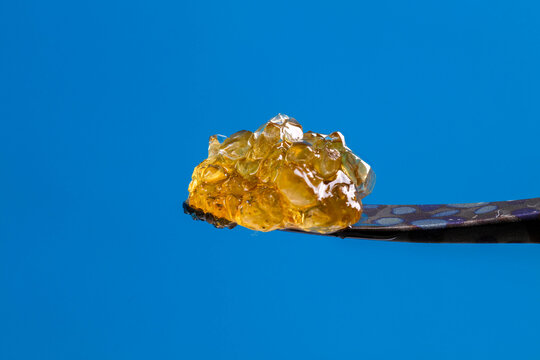
In the realm of cannabis concentrates, two other popular options that have gained considerable attention are live resin and rosin. While both offer potent THC experiences, they differ significantly in terms of production methods, flavor profiles, and overall characteristics. Let’s explore the distinctions between live resin and rosin in greater detail.
Live Resin and Rosin Production Methods
Live Resin: Live resin extraction involves freezing freshly harvested cannabis flower or trim immediately after harvest, before the drying and curing process. By freezing the plant material, the preservation of cannabinoids and terpenes is prioritized. The frozen cannabis is then subjected to solvent-based extraction methods, such as butane or propane extraction, to obtain a concentrate rich in THC, terpenes, and other valuable compounds. The low temperatures and minimal processing help retain the plant’s natural aroma and flavor, resulting in a highly aromatic and flavorful product.
Rosin: In contrast to live resin, rosin is a solventless concentrate, meaning it does not require the use of solvents like butane or propane. The rosin-making process involves applying heat and pressure to cannabis flower or hash, which causes the resinous trichomes to separate and ooze out the desired concentrate. This method preserves the purity of the concentrate, as no solvents are used, and it allows for a more direct extraction of the plant’s essential compounds. Rosin production can be done with simple tools like a hair straightener or a specialized rosin press.
Flavor and Aroma
Live Resin: The unique selling point of live resin is its ability to retain the original terpene profile of the cannabis plant. Since the extraction process occurs shortly after harvest and freezing, the terpenes remain intact, resulting in a concentrate with a rich, diverse, and pronounced flavor profile. Live resin often offers a full spectrum of aromatic compounds that provide a more authentic representation of the cannabis strain’s natural taste and scent.
Rosin: While rosin extraction does not capture the same array of terpenes as live resin, it still preserves a portion of the plant’s flavor and aroma. The rosin-making process allows for a more direct extraction of cannabinoids and terpenes, providing a concentrate that showcases the unique qualities of the starting material. The flavor and aroma of rosin can vary depending on the strain used and the extraction parameters, but it generally retains a desirable taste that reflects the characteristics of the cannabis cultivar.
Consistency and Texture
Live Resin: Live resin often has a honey-like consistency and can range from a more liquid form to a slightly viscous texture. The consistency can be attributed to the preservation of moisture during the extraction process, as well as the high terpene content. Live resin is known for its malleability and ease of use, making it suitable for various consumption methods like dabbing or vaporizing. You can also have cured resin.
The texture of rosin can vary depending on the starting material and the extraction conditions. It can range from a sticky and pliable substance to a more brittle and shatter-like consistency. The texture of rosin is influenced by factors such as the temperature and pressure applied during the extraction process. Rosin can be consumed through dabbing, vaporizing, or added to cannabis flower for an enhanced experience.
Live resin and rosin offer distinct experiences within the world of cannabis concentrates. Live resin captivates users with its aromatic and flavorful terpene profiles, preserving the essence of the freshly harvested plant material. On the other hand, rosin showcases the direct extraction of cannabinoids and terpenes without the use of solvents, offering a pure and versatile concentrate. Whether you prefer the robust flavors of live resin or the solventless purity of rosin, both options provide an opportunity to explore the diverse and potent realm of THC concentrates. Remember to consume responsibly and experiment with different strains to find the concentrate that aligns with your preferences.
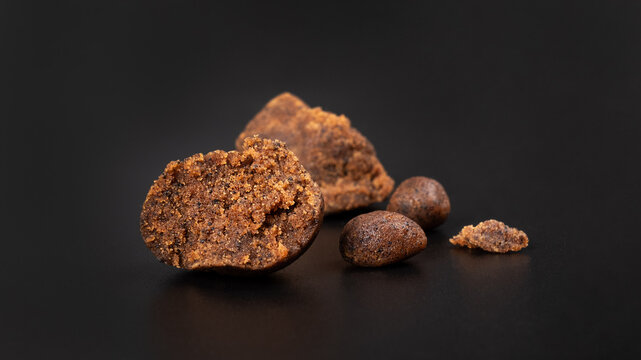
Hashish
Hashish also known as hash, holds a special place in the world of cannabis concentrates due to its rich history and diverse production methods. Throughout different regions of the world, various techniques have been developed to create this concentrated form of cannabis. Let’s take a closer look at hashish production methods in different parts of the world.
Morocco and the Middle East
Morocco is renowned for its traditional hashish production, which has been perfected over centuries. In this region, hashish is commonly made using the sieving method. Mature cannabis plants are gently rubbed over fine-mesh screens, causing the trichomes (resinous glands) to separate from the plant material. The collected resin is then compressed into blocks or shaped into balls by hand. This technique yields different grades of hashish, ranging from lower-quality “kif” (made from plant material and lower-grade trichomes) to higher-quality “sift” (made from pure trichomes).
Similarly, countries in the Middle East, such as Afghanistan, Lebanon, and Pakistan, have their own unique methods of hashish production. One notable technique involves the production of charas, where skilled cultivators hand-rub live cannabis plants to collect resin on their hands, which is then rolled into balls or cylindrical sticks. Charas is highly regarded for its potent effects and aromatic profile.
India and Nepal
In India and Nepal, the production of hashish is deeply ingrained in cultural traditions. Here, the production method primarily revolves around the collection of resin from live cannabis plants. Skilled artisans gently rub their hands over the plants, allowing the resin to accumulate on their palms. The resin is then meticulously rolled and shaped into small balls known as “temple balls” or “finger hash.” This traditional method, similar to the charas technique, results in high-quality and potent hashish.
Nepal and the Himalayan Region
The Himalayan region, including Nepal and parts of India, is known for producing a unique form of hashish called “finger hash” or “hand-rubbed hash.” This process involves collecting resin from live cannabis plants using gloved hands or specialized gloves made of fine fabric. The resin is then rolled and shaped into small balls, producing a highly potent and sought-after form of hashish. The cool temperatures and unique terroir of the Himalayas contribute to the distinct flavors and effects of the hashish produced in this region.
Western Countries
In modern Western cannabis markets, hashish production has evolved to incorporate various extraction techniques. Solvent-based extraction methods, such as ice water extraction or butane extraction, are commonly employed. Ice water extraction involves agitating cannabis plant material in ice water, which causes the trichomes to separate and sink to the bottom. The collected resin is then dried and pressed to form hashish.
Furthermore, the advent of specialized equipment like hash-making machines and rosin presses has allowed for the production of solvent less hashish. These devices apply heat and pressure to cannabis flower or sifted trichomes, resulting in a concentrated resin that can be shaped into blocks or molded into various forms.
Hashish production techniques vary across different regions of the world, each influenced by cultural traditions, climate, and available resources. Whether it’s the sieving method in Morocco, charas production in the Middle East, hand-rubbed techniques in India and Nepal, or modern extraction methods in Western countries, hashish continues to captivate enthusiasts with its distinct flavors, potent effects, and historical significance. As the cannabis industry evolves, it’s fascinating to see how these diverse production methods contribute to the wide range of hashish experiences available to consumers.
How useful was this post?
Click on a star to rate it!
Average rating / 5. Vote count:
No votes so far! Be the first to rate this post.
Author
-
Meet Dr. Kendall Gregory, a highly accomplished professional with a remarkable academic background and a deep passion for empowering individuals through knowledge. Dr. Gregory’s educational journey began with a Bachelor of Science degree, followed by a Doctor of Chiropractic Medicine, focusing on diagnosing and treating musculoskeletal conditions. He further expanded his expertise with a Master's degree in Oriental Medicine, specializing in acupuncture and Chinese herbology, and a Master's degree in Health Care Administration, emphasizing his dedication to improving healthcare systems. Dr. Gregory combines his extensive knowledge and practical experience to provide comprehensive and integrative healthcare solutions. Through his writings, he aims to inspire individuals to take charge of their health and make informed decisions.
View all posts








Visitor Rating: 5 Stars